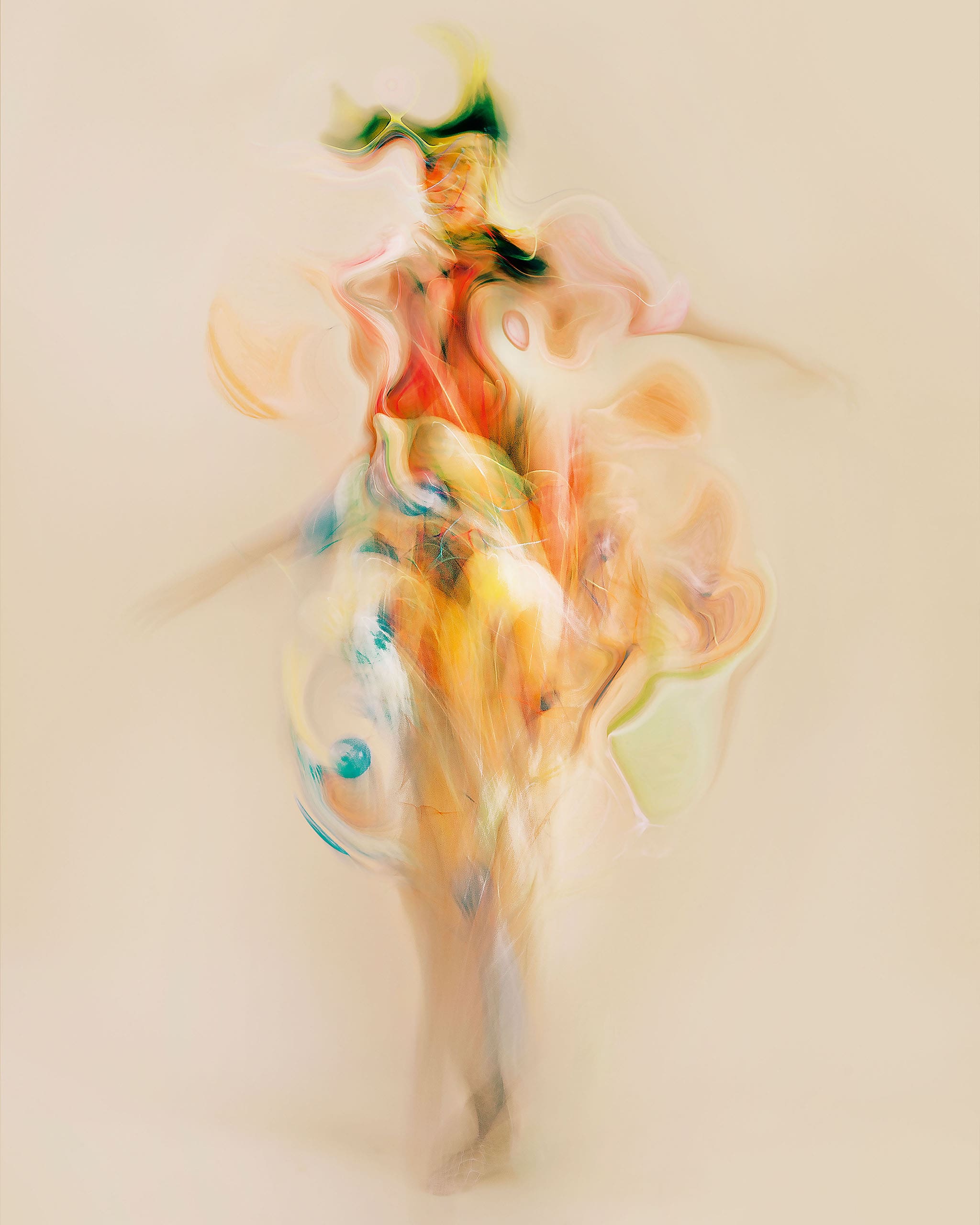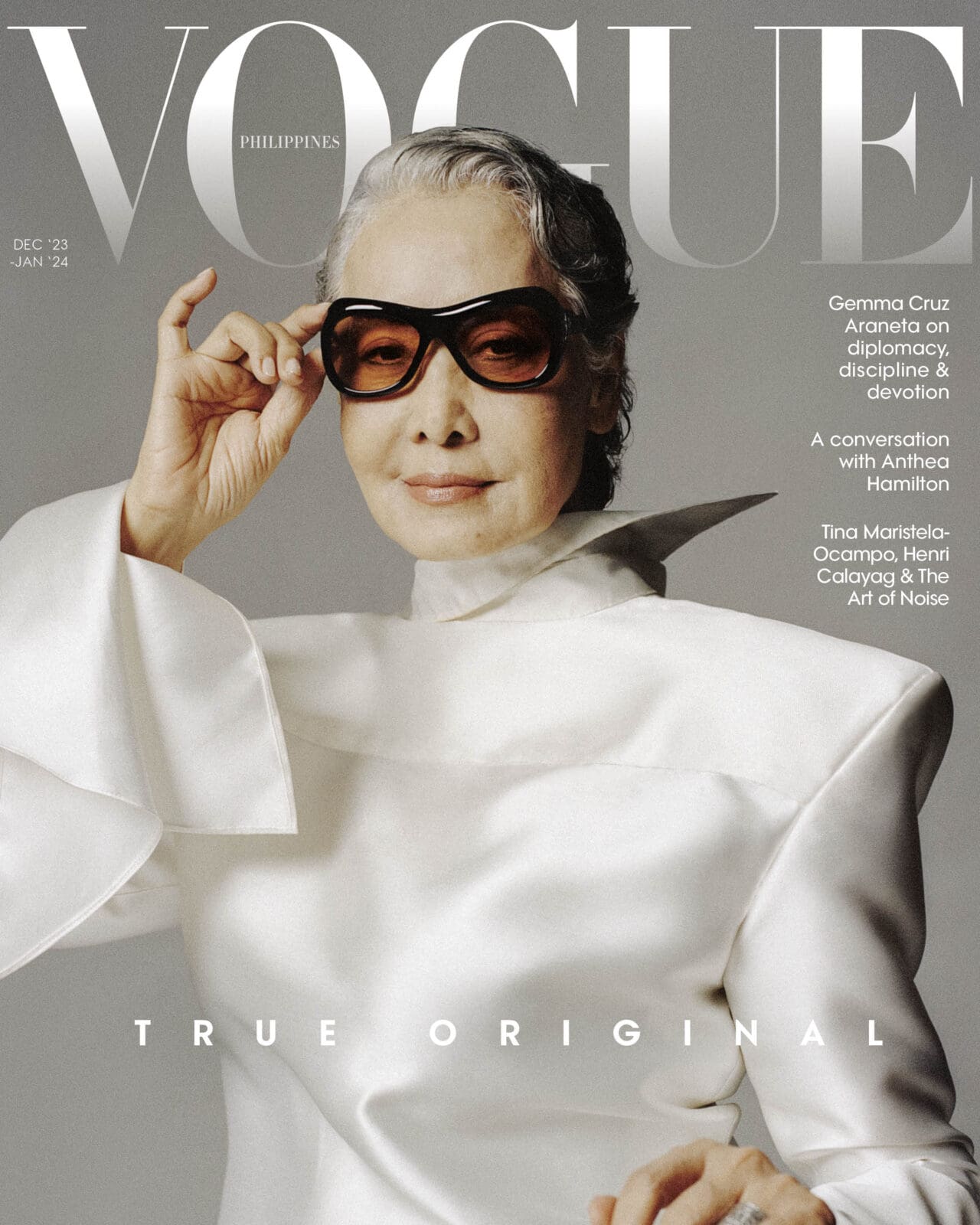Photo by Chiron Duong
After years spent molding her voice as a classically trained singer, Anjeline de Dios now uses it as a tool for healing—others, and herself.
Growing up in a musically inclined family, Anjeline de Dios recalls a distinct opportunity where her voice felt like a true privilege and gift. She would be called to the hospital to sing at the bedside of those who were ill. “There’s something in the way a sick person listens: their hearing is more sensitive, and it makes a different sound come out of you as a singer,” she says.
“A sacred service,” a kind of higher calling, is how she considers it. She had joined liturgical choirs and glee clubs, including the Ateneo Chamber Singers, but found that conforming to the conventions of classical vocal technique would not always make her feel at ease. “When you’re a girl in the Philippines who loves to sing, you’re put on a track,” she observes. “We put ourselves into this path of progress to sound better, and then it tumbles very easily into self-punishment and pressure and competitiveness, hearing that we’re not good enough.”
It came to a point where she decided to abandon singing entirely. “I experienced a very slow erosion of my desire to sing,” Anjeline says. “I felt stumped, like I have a voice, and I want to sing, and I don’t know what to do with my voice.” Turning instead to a career in the academe, she pursued her Master’s in Applied Ethics at Linköping University in Sweden and then completed her PhD in Geography at National University of Singapore.
There, she found herself drawn back to the musical world, researching on the lives of migrant musicians, starting with friends working on cruise ships. “It was almost like I diverted my impulse to sing toward listening to stories of musicians who were doing things with their voices for a living,” she says.
Inner Voice
“I’ve always been interested in Buddhist meditation, yoga, and my Catholicism, strangely,” she shares. “I suppose because my relationship with sound occurred in a Catholic environment; that feeling of singing to God has always been a primary thread for me.”
Exploring Inner Dance—a healing modality pioneered by Filipino ad executive-turned-healer Pi Villaraza using free movement, sound, and other sensorial practices to align energies and unlock the subconscious—coaxed out the voice she had locked away for so long. “I started out moving spontaneously, and to my surprise, I opened my mouth and my voice just came out of me,” she relates. “It was like a bellow, a sob, and it became so many different things. I remember crying so hard. I knew it was there, and I was left with a very clear experience of being cleansed.”
This led de Dios to begin solo chanting sessions where she would lock herself in her bathroom and record what was coming out of her until she reached the point of tears: raw, improvised “sounding,” as she had come to call it. To her, it seemed to address her own conflicted feelings toward her voice and what it could do. “I knew that I needed it for my sanity. The sense of clarity and simplicity, that feeling of peace and calm, and ‘This is home, this is who I am.’” What started as 30-second bursts evolved into three full minutes, at which point she began emailing the recordings to friends seeking feedback and support. “They would tell me what they would hear, and there were always words of tenderness and recognition. I was fascinated by what they could hear that I couldn’t hear myself.”

Healing Within
Among the people she shared the recordings with were jazz musicians she’d encountered in her PhD research, who were doing their own explorations of how sound or, more precisely, frequencies, could affect the body. “If you go on YouTube and look up binaural beats, you’ll see tons of healing sounds: 432 Hertz equals the healing frequencies, there’s this thing called the Schumann Resonance, which is the frequency of this and that.” An invitation to perform with them, coupled with de Dios’s discovery of yogic mantras in the middle of her own yoga teacher training, is what, she says, pushed her “out of the bathroom and onto stages—yoga spaces, jazz clubs, folk bars, really weird spaces.”
Her friends at White Space Wellness yoga studio encouraged her to develop her emerging art form into a Vocal Meditation program, while choreographer Ea Torrado invited her to score her dance piece on babaylan and pre-colonial methods of healing. She also started incorporating a vocal looper into her performances, layering her voice and giving it dimension. “I don’t play any instruments, but the looper opened up the possibility of using my voice to create a chorus of myself,” she says, “so it’s still rooted back to my chorale experience of many voices breathing together.”
The first thing that may come to mind when mentioning “sound healing” is the use of a Himalayan or Tibetan singing bowl, stroking it to evoke a therapeutic response. People have compared de Dios’s voice to a human singing bowl, which she happily considers a compliment. Her performances have taken her to yoga studios, universities, and galleries in Hong Kong, Singapore, Indonesia, and Berlin; currently, she is in Germany completing an artist residency sponsored by Goethe-Institut at arts organization Savvy Contemporary, where she will be conducting a series of workshops and performances in partnership with a feminist collective. But during the pandemic, she took her techniques online with 40-minute chanting sessions over Zoom that she referred to as Sonic Meditations or Sound Journeys. She balks at the idea of describing these as a “sound bath,” because she knows the experience may not always be relaxing. “There’s a wildness to the sound because we can’t control how people hear what they hear.”
Having conducted over a hundred sessions by now, both in-person and online, with audiences that range from individual clients to small groups. Whether for fellow sound healers, musicians, and yoga teachers as clients, the experiences of those who attend are as varied and unique. People describe colors, sensations, visualizations, regressions, memories, even the feeling of being back in their mother’s arms. “A common experience I hear from people is that they’re in this in-between space, a trance state,” she says, while some, to her delight, wind up falling asleep.
But at the start of each day, de Dios goes back to the primary practice of using her voice to soothe herself. “Every morning I meditate for 15 minutes, and at the end of it I chant one “Ama Namin” and one “Aba Ginoong Maria,” she says. “There’s a special depth to these prayers that I grew up with, prayers I spontaneously uttered during extremely painful and joyful moments, prayers I share with my family and home culture. I find that invoking these prayers every morning creates an arc of connection between the past, the unfolding present, and the unknowable future.”
Listen to Anjeline de Dios’s work at soundcloud.com/notesfromashes or visit anjeline.net.

